Key takeaways:
- Community housing development is about creating safe, vibrant neighborhoods through resident engagement and input.
- Local activism empowers residents and fosters relationships necessary for addressing housing challenges.
- Effective activism relies on building trust, consistent communication, and the power of personal stories to inspire change.
- Successful community projects highlight the transformative impact of collaboration and a shared vision for affordable housing.
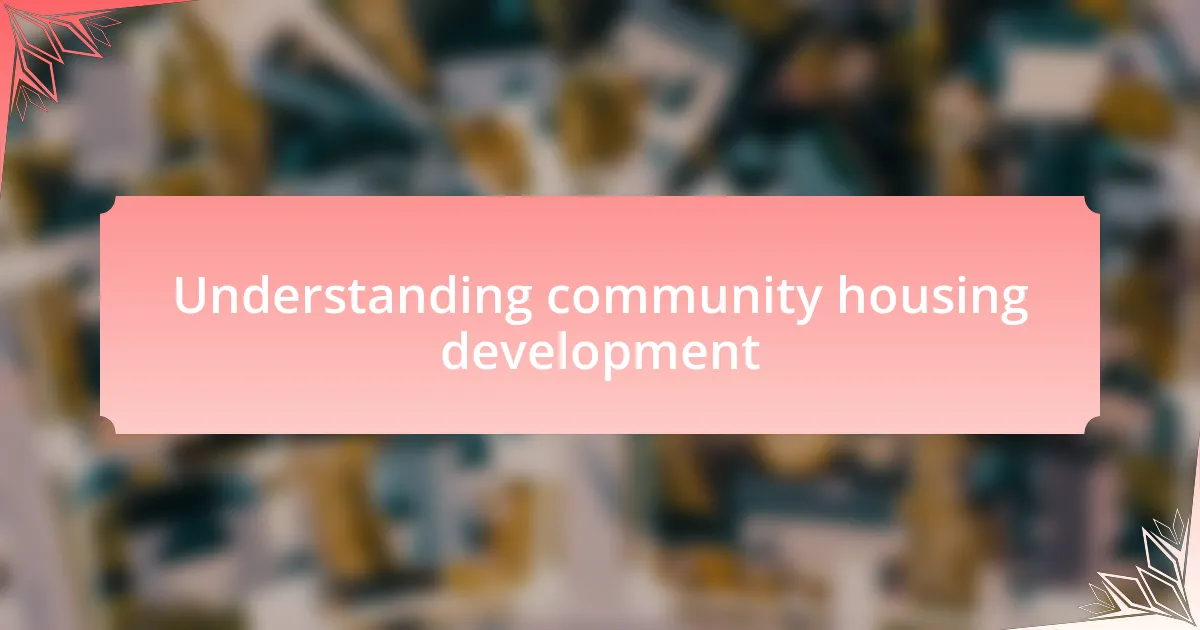
Understanding community housing development
Community housing development is more than just constructing buildings; it’s about creating vibrant neighborhoods where everyone feels they belong. I remember standing at a community meeting, listening to residents share their stories of struggle and hope. Their voices reminded me that these developments are often life-changing, offering safety and stability to families who need it most.
As I delved deeper into community housing initiatives, I began to appreciate the intricate planning involved. It’s about balancing needs—like affordable rent and access to essential services. I often wondered, how can we truly understand the desires of diverse communities? Engaging with residents has shown me that their input is crucial, shaping projects that genuinely reflect their lived experiences.
The emotional impact of successful community housing development cannot be overstated. I’ve seen firsthand how these projects can foster a sense of pride and ownership among residents. When families finally have a place to call home, the joy is palpable, revealing the profound connection between housing and well-being. This transformation makes me ask, what more can we do to advocate for these vital developments?
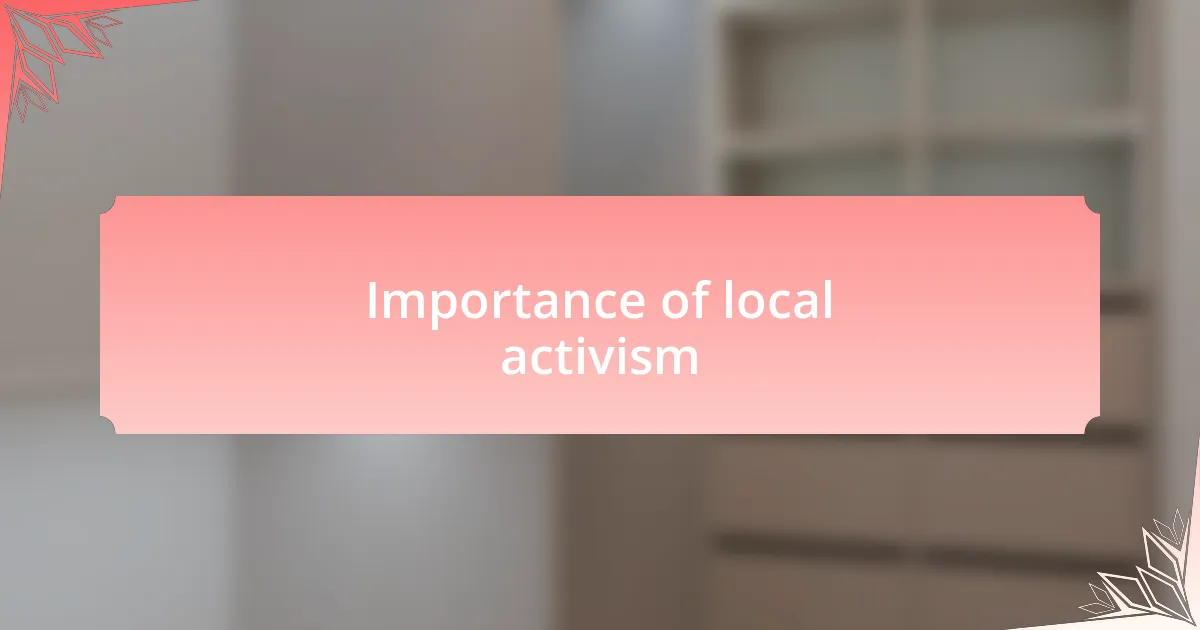
Importance of local activism
Local activism plays a pivotal role in shaping community housing development because it elevates the voices of those directly affected by housing issues. I recall a local gathering where residents rallied to oppose a proposed development that didn’t consider affordability. It struck me how powerful it is when individuals unite for a common cause; their passion ignited conversations that eventually led to revisions in the project plan.
Through my experiences, I’ve noticed that grassroots movements often serve as the groundwork for broader change. I once joined a coalition that brought together various organizations and community members to discuss housing inequities. The collaborative energy during those meetings showcased the importance of local knowledge—people sharing realities that outsiders might overlook. How can we expect solutions to be effective if they don’t come from those who know the community best?
Moreover, local activism fosters a sense of empowerment among residents. During a neighborhood cleanup event, I saw residents come together not only to beautify their area but also to strengthen bonds with one another. It reminded me that activism is not just about policy changes; it’s also about building relationships and instilling hope. When people feel empowered, they are more likely to advocate for the changes they wish to see in their communities, sparking a cycle of ongoing engagement and transformation.
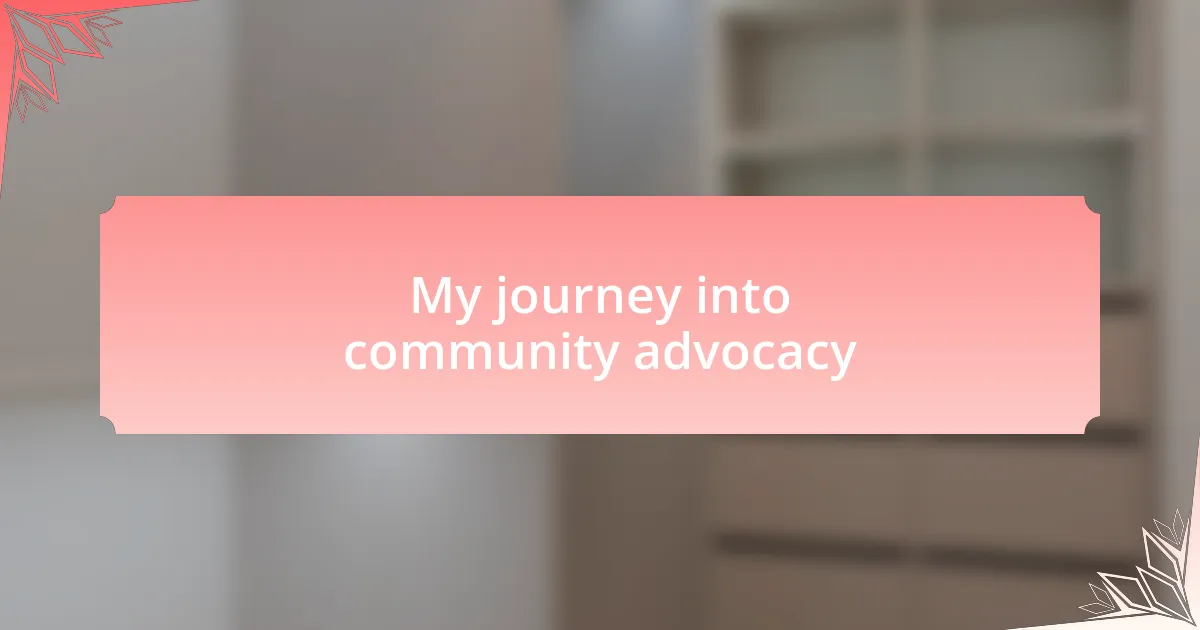
My journey into community advocacy
My journey into community advocacy began unexpectedly. I still remember that first meeting, filled with unfamiliar faces at the community center. It was a mix of nerves and excitement as I listened to residents share their stories. I felt a deep sense of responsibility to amplify their voices. Those narratives resonated with me, compelling me to become an active participant instead of merely a bystander. Have you ever felt that kind of awakening?
With each event I attended, my commitment to advocacy deepened. I vividly recall standing outside a city hall, holding signs beside fellow activists as we urged local representatives to prioritize affordable housing. The energy was palpable; it was like being part of a larger heartbeat. In those moments, I realized that my passion could translate into tangible change when united with others who shared my vision. Isn’t it fascinating how collective power can transform individual hopes into a powerful movement?
As I continued my involvement, I found that advocacy was not just about addressing immediate needs but also about fostering a sustainable community spirit. I took part in workshops where residents trained each other on their rights regarding housing policies. The shared laughter amid serious discussions forged connections I hadn’t anticipated. It was a beautiful reminder that while the work can be challenging, the relationships built fuel our collective resilience and hope for a better future.

Strategies for effective activism
When it comes to effective activism, I’ve learned that building genuine relationships is crucial. I recall a neighborhood meeting where we discussed our housing challenges. By simply sharing a meal together, barriers lowered, and real conversations began. Why does it feel easier to voice concerns over a shared plate? Because that connection fosters trust, making people feel safe to express themselves.
Another strategy I’ve found invaluable is consistent communication. I remember the impact of a monthly newsletter that I helped create, which kept residents informed about local issues and upcoming events. This simple touch not only engaged more people but also empowered them to take action. Have you ever felt left out simply because you weren’t in the loop? Regular updates bridge those gaps and help ensure that everyone is part of the conversation.
Lastly, I can’t emphasize enough the power of stories in activism. I once shared my own housing journey at a local rally. Standing in front of an audience, I realized how my personal experiences resonated with those around me. Stories are universal; they invite empathy and inspire others to share their own. How often do we underestimate the impact of our narratives? They can light the spark of change in someone else, igniting a movement that starts with just one voice.
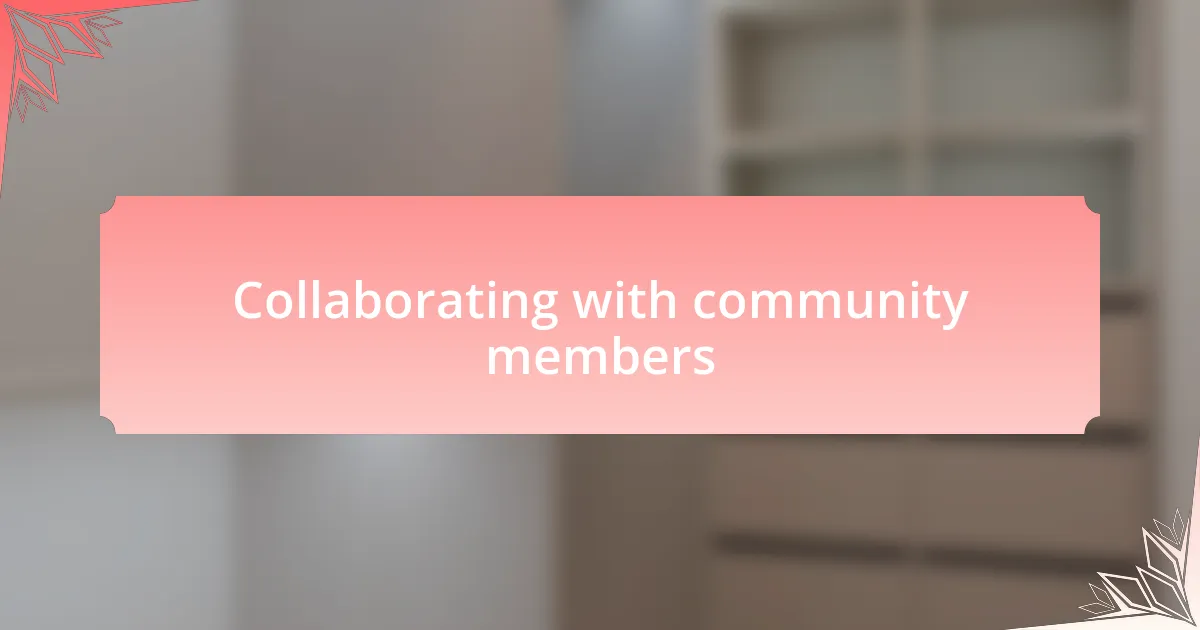
Collaborating with community members
Collaborating with community members is not just about shared goals; it’s about creating a tapestry of voices and experiences. At one community workshop, I vividly remember an elderly resident’s heartfelt story about her childhood home, which sparked a deeper conversation about preserving our neighborhood’s history. It hit me then—how often do we overlook the wisdom of our elders? Engaging in these dialogues brings richer perspectives that might otherwise go unheard.
One of the moments that really stood out to me was when we organized a weekend cleanup event. I noticed how volunteers from all walks of life came together, each bringing their own unique talents and backgrounds. I was surprised by how a simple task like picking up litter sparked conversations about durability in housing and the need for better green spaces. It made me realize that collaboration often yields unexpected insights; the act of working side by side cultivates relationships that extend beyond the immediate objective.
Effective collaboration requires a certain magic, a blend of patience and willingness to listen. I recall leading a community forum where many were hesitant to voice their thoughts at first. But as I made it clear that every opinion mattered, voices gradually emerged, creating a symphony of ideas. Have you ever noticed how people light up when they feel their input is valued? That moment of validation can be transformative and ensures that everyone feels included in shaping our community’s direction.

Overcoming challenges in activism
It’s no secret that activism comes with its share of challenges, and I’ve faced quite a few myself. During one campaign, I was met with skepticism from residents who felt their voices wouldn’t make a difference. That prompted me to rethink my approach. How could I reassure them? I organized informal meetups, creating a safe space for open dialogue, where everyone could share their concerns and aspirations. It was incredibly rewarding to see those hesitant individuals slowly transform into passionate advocates for our cause.
Another significant hurdle was navigating the politics of local government. I remember attending a town hall meeting where bureaucratic jargon flew around like confetti, leaving many of us confused. To tackle this, I took the initiative to break down those complex policies into simple terms for our community. By hosting workshops that demystified local legislation, I fostered a more informed citizenry. The eagerness with which people embraced this knowledge inspired me; it was as if a light bulb switched on, illuminating the path to advocating for change.
Often, it’s not just the external obstacles that daunt activists, but the internal ones, too. I wrestled with self-doubt and wondered: Could I really lead this effort? To combat that feeling, I drew support from friends and mentors who believed in my vision. Surrounding myself with encouraging voices reminded me that no one has to navigate the path alone. That revelation felt liberating—empowerment doesn’t always come from within; sometimes it’s about the community that rallies around you.
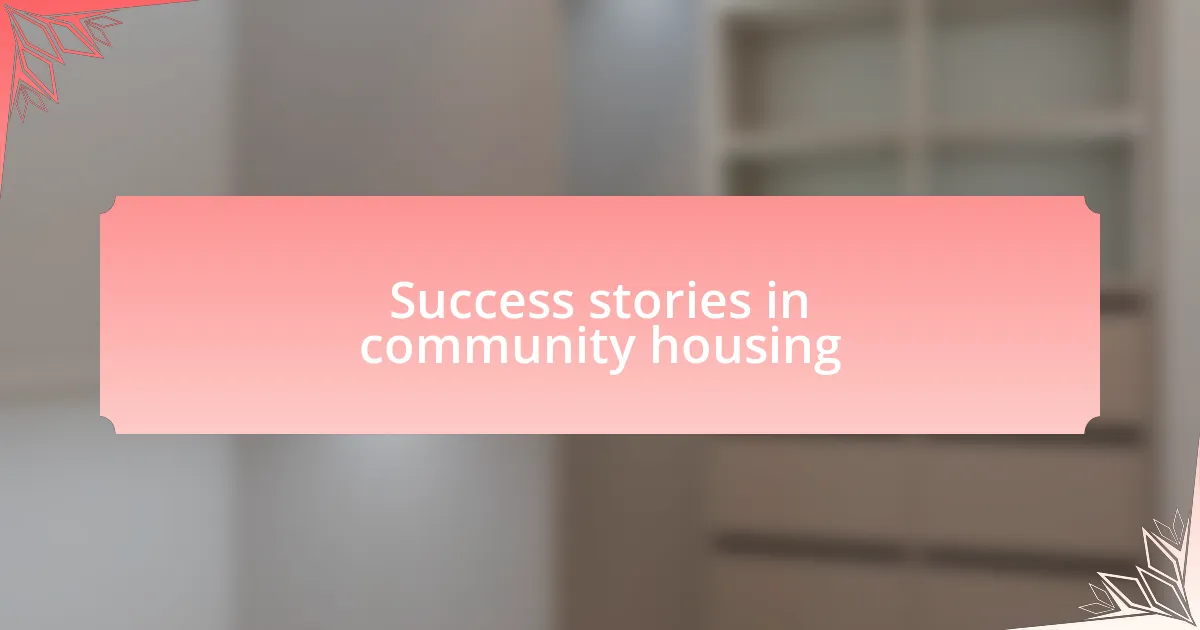
Success stories in community housing
One remarkable success story that comes to mind is a project in my neighborhood where community members banded together to convert an abandoned building into affordable housing. I remember the enthusiasm during our planning meetings, where each person brought unique ideas, from design elements to potential funding sources. We harnessed that collective energy, and watching the transformation unfold felt like witnessing a dream become reality.
Another inspiring case was a coalition that formed to address homelessness in our city. In collaboration with local nonprofits, we created a program to provide transition housing and support services. I’ll never forget how it felt to meet a family who had struggled for years, only to see the relief on their faces when they received keys to their new home. It was a reminder that small initiatives can have profound impacts, bringing hope where it was once scarce.
Finally, there was an initiative aimed at creating energy-efficient, sustainable housing in our community. The excitement was palpable as we attended workshops on eco-friendly materials and building methods. My own heart swelled with pride as families embraced this green approach, knowing it was more than just a home—it was a step toward a healthier planet and future. How often do we get to be a part of something that not only benefits ourselves but also sets a precedent for generations to come?